Gardening appeals to the senses in ways that few other pastimes can. Moving among the beautiful blooms and diverse foliage, your eyes are greeted with myriad colors and textures. The sun on your back, the cooling springtime breeze, and the sound of the birds and bees going about their day’s work are all a part of the magic that takes place in the garden.
I would be remiss, however, to leave out the power of fragrance. When it comes to scent, some flowers stand out above the rest for their particularly strong and pleasant scents. In the same way, some flowers are better to leave on the branch. Others are well suited to cutting and floristry.
When these two characteristics coincide, the results are enchanting. Of course, there are practical, scientific reasons why flowers look and smell a certain way, but there is no harm in pretending that the reason for this combination is expressly for the gardener’s enjoyment. Here are some of my favorite highly fragrant flowers that are perfect for the cutting garden:
Our Favorites:
Carnation
Chabaud Blend Carnation Seeds
Sweet Pea
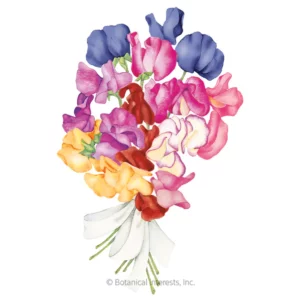
Perfume Delight Sweet Pea Seeds
Phlox
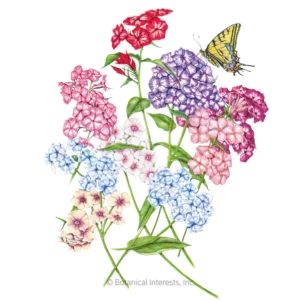
Grandiflora Starry Eyes Blend Phlox Seeds
Bearded Iris
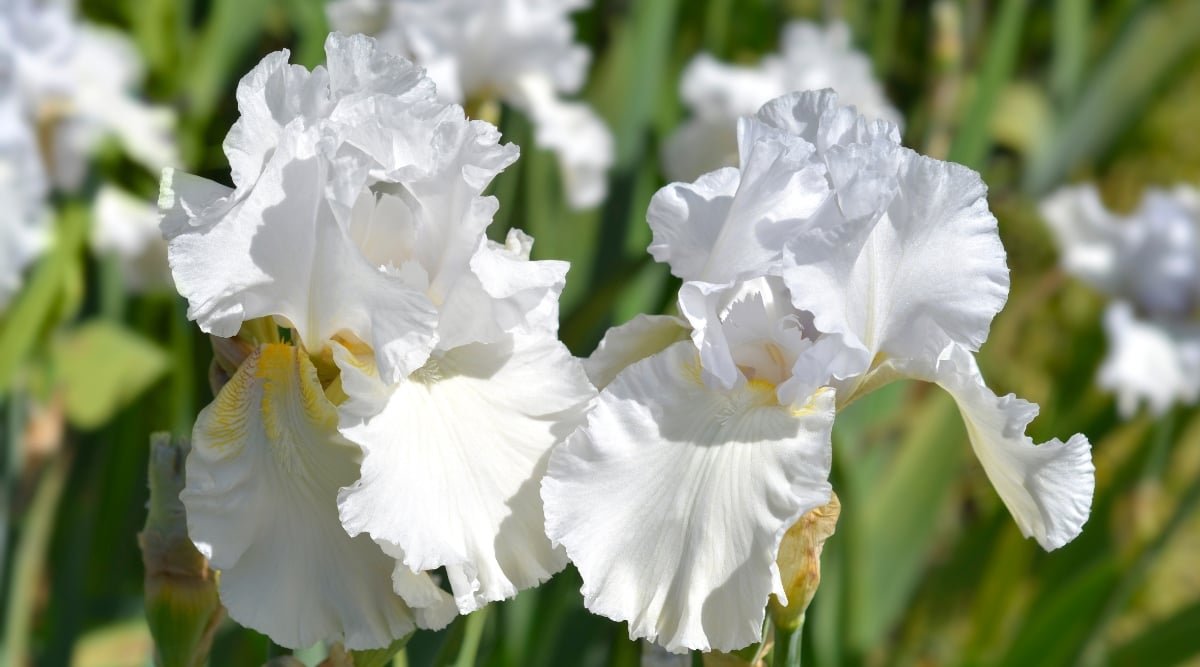
Bearded irises are some of the most intricate and beautiful flowers, and they smell great, too! Their large, flashy flowers with fancy, ruffled petals come in a wide array of colors and color combinations. Their fragrance is as varied as their colors, with some smelling of orange blossoms, some of chocolate, and others said to be reminiscent of grape soda.
Some of the most fragrant varieties include the peach-colored ‘Angel’s Rest’ and the stunning, bicolor ‘Recurring Delight.’ Bearded irises prefer to be planted in full sun and well-draining soil. They are rhizomatic perennials that sometimes bloom twice a year. In warmer climates, give your irises some protection from the hot afternoon sun.
Lily of the Valley
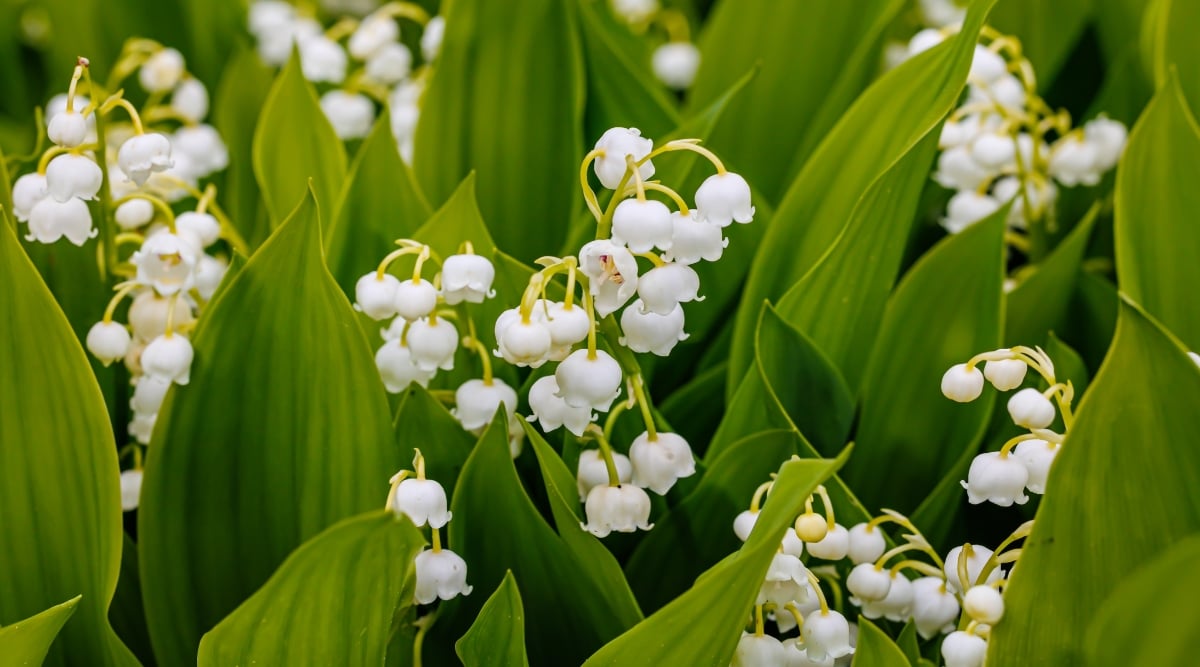
Said to be the favorite flower of Queen Elizabeth II, many royal brides have included lily of the valley flowers in their bridal bouquets. A legend claims that these pretty, petite plants sprang from places where Eve’s tears hit the ground as she left the Garden of Eden. The scent of these flowers is white floral with green notes, slightly sweet and fresh.
Lily of the valley plants grow nicely in more shaded parts of the garden, where they colonize and spread by creeping underground rhizomes. Slender flower racemes support five to fifteen small, white, or rarely pink, bell-shaped flowers. These plants contain cardiac glycosides. All parts of the plant are toxic, so care should be taken around pets and children. Check with your local extension office prior to planting; they are invasive in some areas.
Sweet Pea
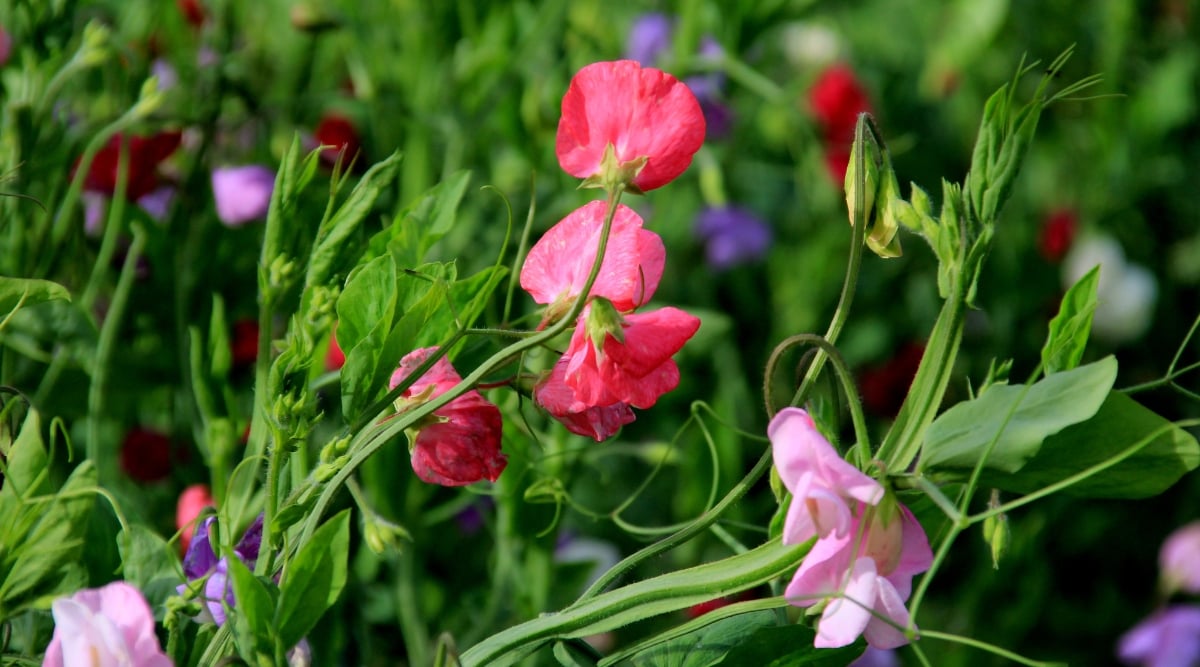
Sweet peas are vining plants that produce charming, sweet-smelling flowers in a wide variety of colors and sizes. They look wonderful grown on a trellis or an arbor leading into the cutting garden. These Italian natives like plenty of sun and moisture and well-draining soil. The vines grow up to eight feet tall and produce a great number of flower stems.
The lovely fragrance of sweet pea flowers is similar to an orange blossom mixed with a hint of rose. Some varieties are bred to be extra fragrant, like ‘Matucana,’ a variety with petite, pink, and purple flowers that are surprisingly aromatic. These peas are not edible, so plant them away from your vegetable garden to avoid any confusion.
Lilac
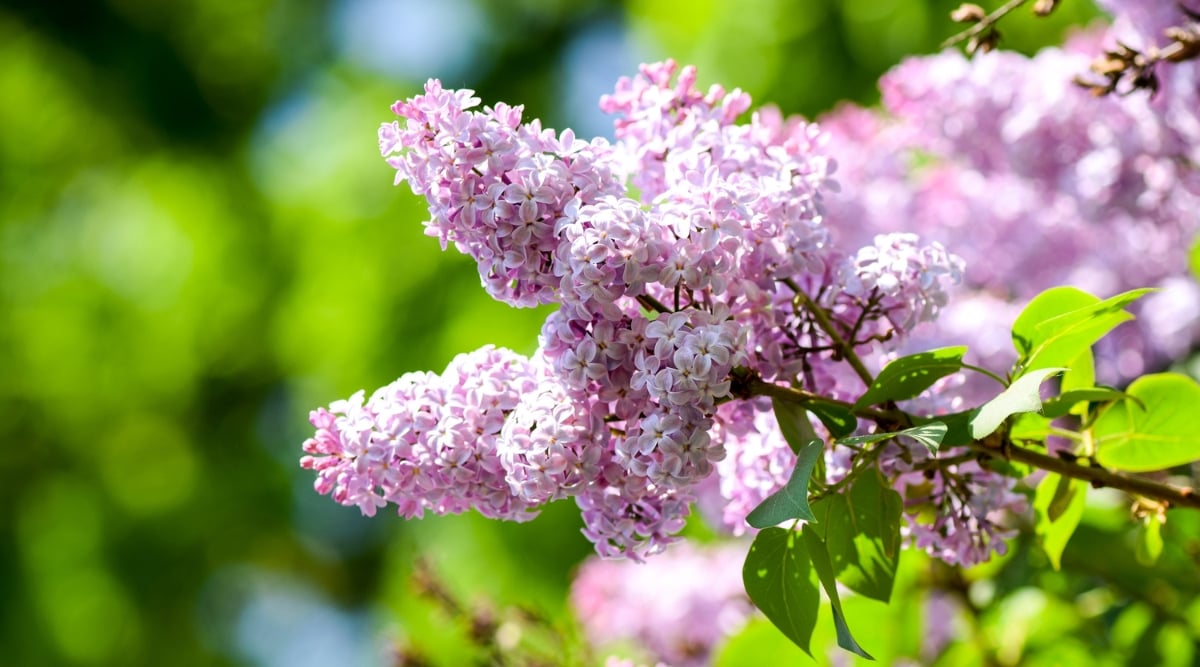
Lilacs remind me of my childhood, when they grew along the border of our yard, surrounding our play space with their powdery, sweet, green fragrance. Not only do lilacs smell heavenly, but they are some of the most beautiful flowers around, their large flower clusters blooming in shades of purple, pink, and white.
Lilacs prefer full sun and need to have a period of cold weather in wintertime. Many varieties can be grown in partial shade, but they won’t flower as spectacularly. Plant lilacs in the fall before the ground freezes in moist, slightly alkaline soil. Enjoy these fragrant beauties for two to three months in late spring.
Stargazer Lily
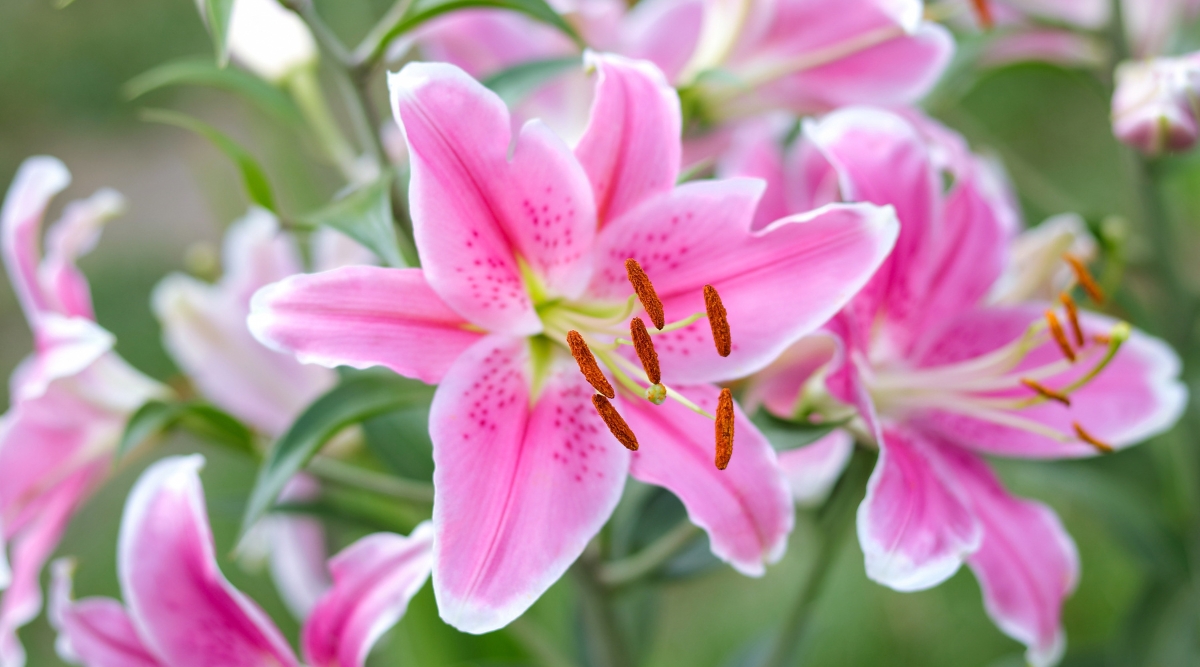
For a spectacular focal point in your cut flower arrangements, stargazer lilies are big, flashy, and exceptionally fragrant. These Oriental lilies have flamboyant flowers in pink and white with freckled petals and large, prominent anthers. They have a sweet and sometimes spicy fragrance that can fill a room and really look spectacular in the garden as well.
The fragrance of lilies is special, as it is a product of the compound linalool, which can help relieve stress and induce feelings of well-being. Plant lily bulbs in the fall, six weeks before the first expected frost. Stargazer lilies prefer full sun and about one inch of water weekly. It’s best to remove the anthers of open lilies, as brushing against them can cause nasty orange stains.
Rose
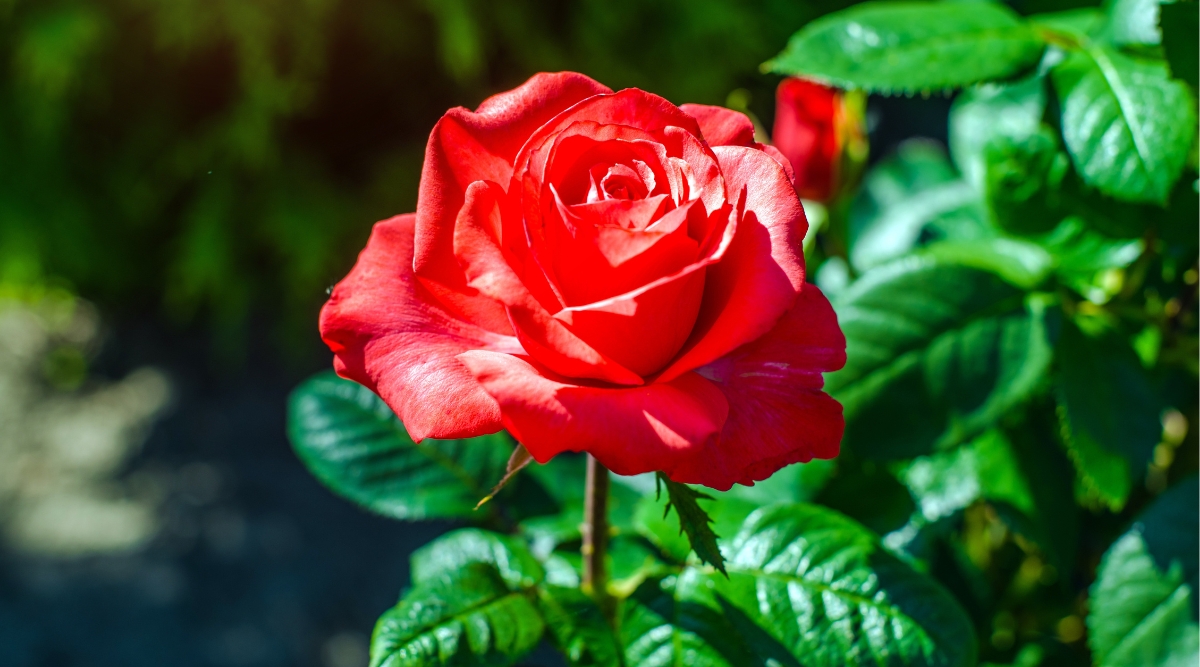
It will come as no surprise that roses are one of the most popular and fragrant flowers in the cutting garden. English roses tend to be the most fragrant, with densely petaled, spectacular blooms growing on attractive shrubs. Roses have varied fragrances, with some smelling sweet and fruity and others spicy or musky.
Roses have a reputation for being difficult to grow, but those flowers are worth the effort. When cared for properly, roses have a vase life of up to 10 days. Roses prefer full sun to partial shade depending on the climate in which they are grown. They should be watered infrequently but deeply.
Phlox
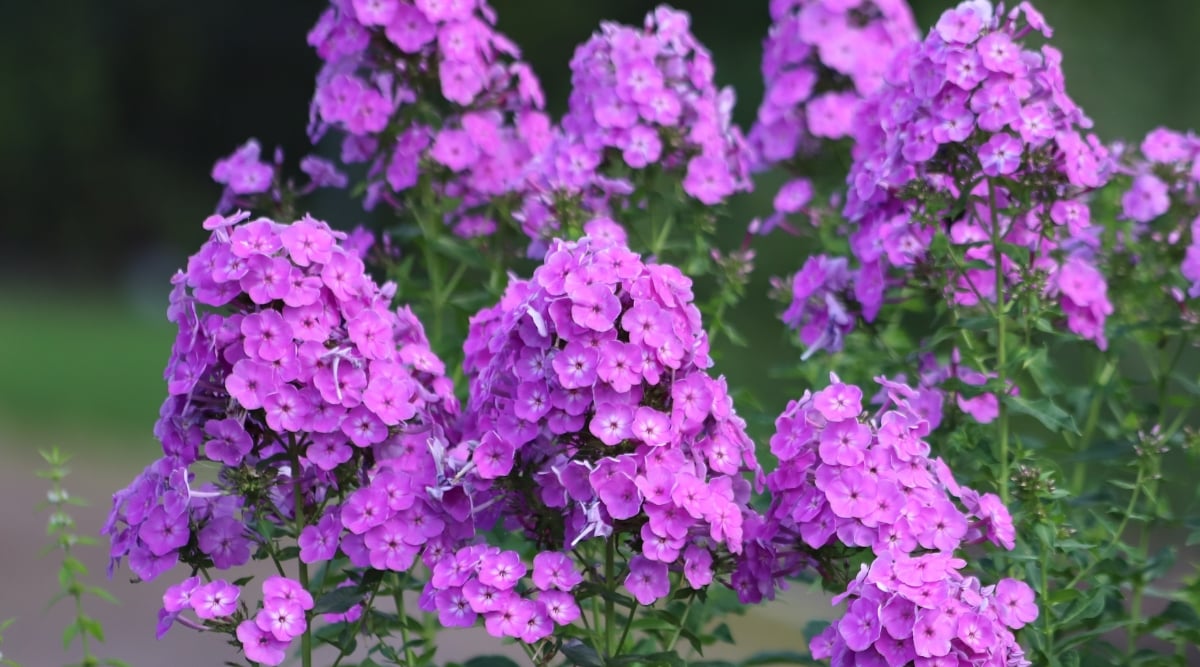
Phlox plants, and in particular, the taller varieties, are a wonderful addition to the cut flower garden. They have a subtle, sweet fragrance that is more apparent on warm, sunny days.
Their large clusters of brightly colored flowers make them a great filler or focal point in floral arrangements. There are more than 1,000 varieties of this flowering plant to choose from, each one lovelier than the last.
Although they are indicated for full sun or partial shade, too much shade will make phlox more difficult to care for and more susceptible to powdery mildew. They are tolerant of different types of soil but need their soil to be evenly moist and well-draining to prevent fungal issues. In warmer climates, give your phlox some shelter from the hot afternoon sun.
Tuberose
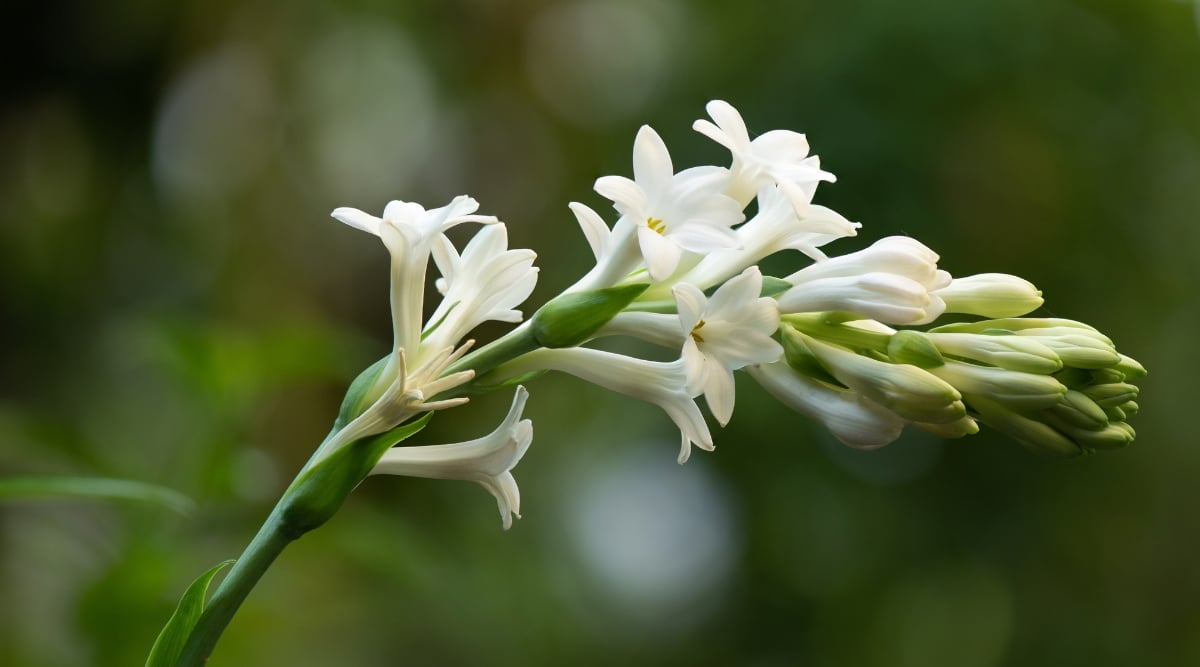
Tuberose is a beloved fragrant flower that’s popular in the perfumery industry. The scent is multi-faceted, sometimes considered medicinal or narcotic, with hints of green, honey, and something earthy and exotic. The plant is native to Mexico and is slightly succulent, making it easy to grow and maintain in warmer climates.
Tuberose bulbs should be planted in full sun and very well-draining soil. The flowers release the strongest scent in the evening, making these wonderful for the moon garden or for planting near outdoor dining areas. They can be cut while most flowers are still in the bud, and the flowers last for about nine days in a vase.
Stock
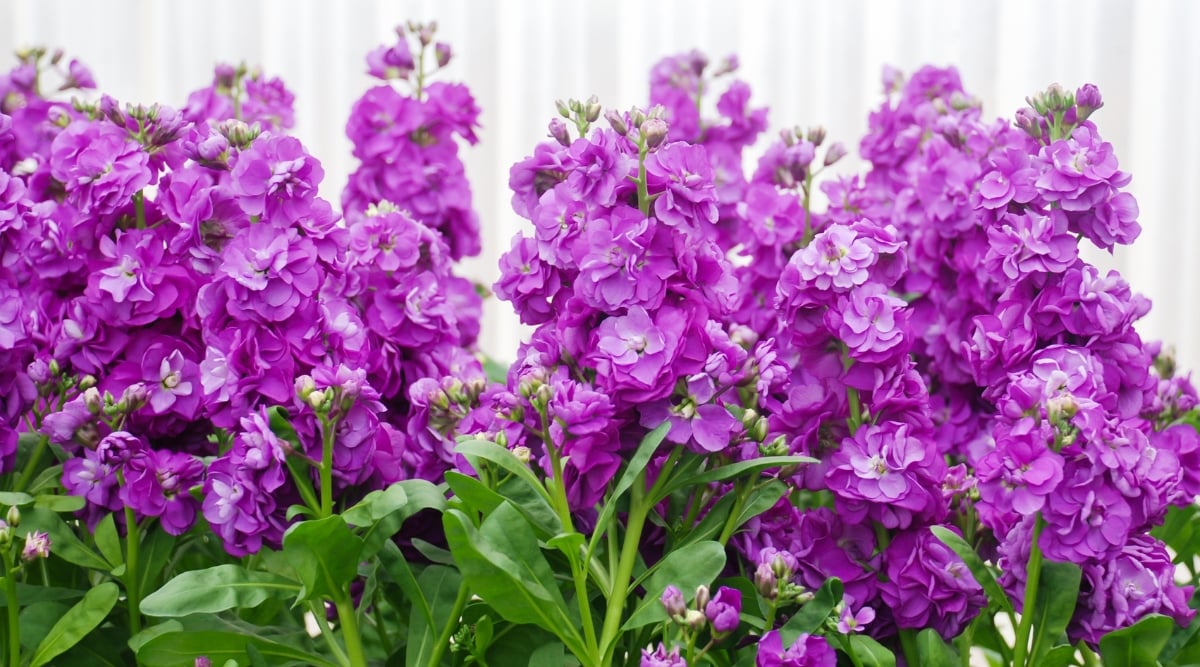
For a stunning, nostalgic vibe in your garden and floral arrangements, stock provides a lot of color and has a warm, spicy scent that smells a bit like cloves. They are perfect for a cottage garden or cutting garden, and in addition to being wonderful for cutting, the spicy-scented flowers are edible and can be used as garnish for salads and baked goods.
When given to a friend or loved one, stock flowers symbolize deep affection. They are warm-climate plants that prefer full sun or partial shade and rich, well-drained soil. Stock are short-lived perennials, and their stems will become woody over time, making them nice and sturdy for cutting. They like moisture, but be careful not to overwater.
Gardenia
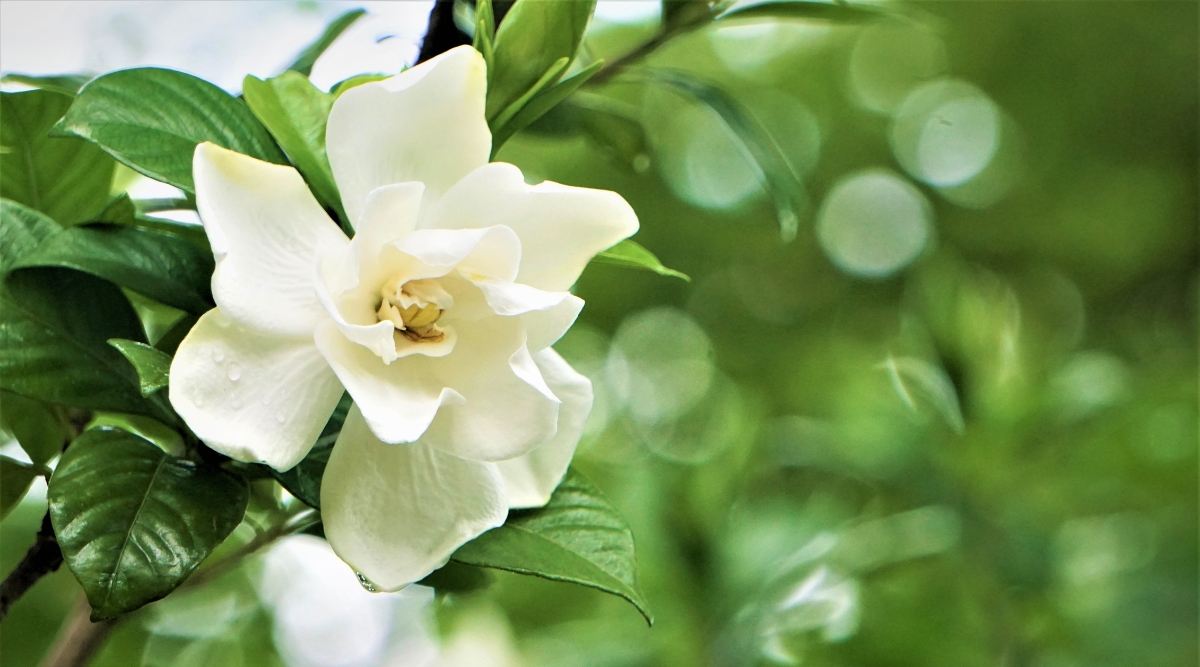
You might not think of them first when considering a cutting garden, but when it comes to fragrant flowers, gardenia is difficult to outdo. Gardenia’s distinctive, creamy, white floral fragrance is among the most popular for use in perfumery, and more than a few cosmetic and body care items borrow the scent, as well. The stunning white blooms are large, and along with glossy green leaves, they make a wonderful addition to any floral arrangement.
Gardenias are heavy feeders, so for the best blooms, make sure to give your gardenia shrub regular applications of fertilizer. Rich, well-drained soil will keep your gardenias looking great, but they aren’t that picky about soil type. These plants need a lot of sun, so place them in the sunniest part of the garden.
Hyacinth
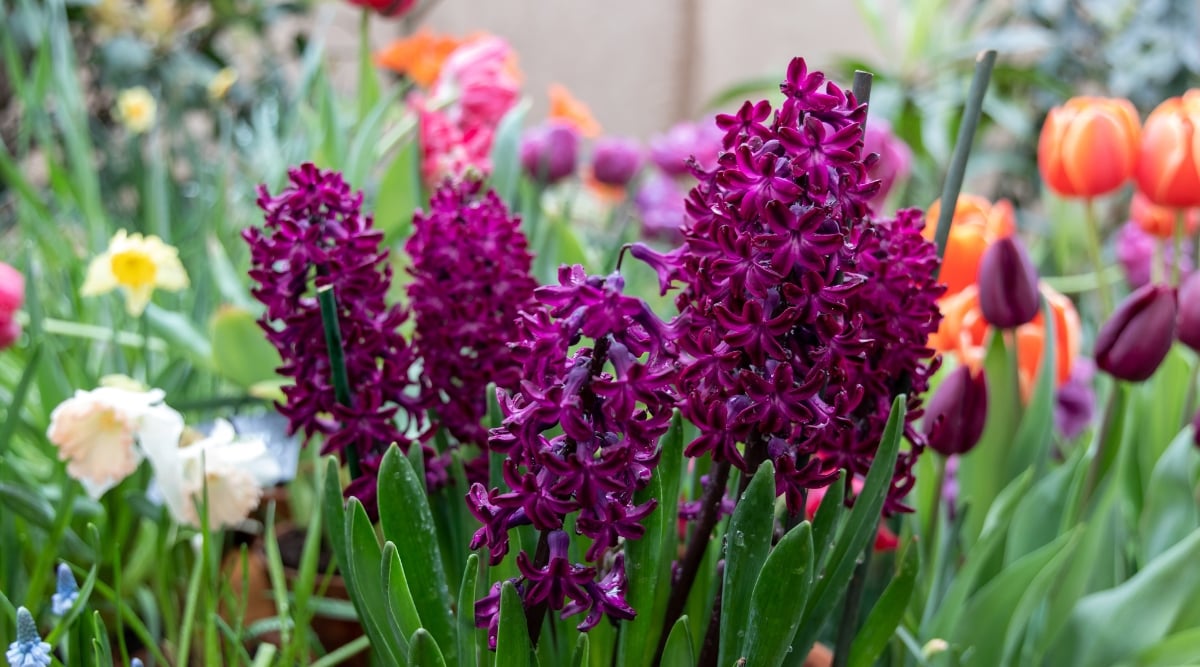
For me, hyacinth is the smell of springtime and of Easter brunch at grandma’s house. These springtime bulbous plants have a very memorable and identifiable scent and sturdy, long-blooming flower racemes. In shades of blue, pink, white, and purple, hyacinths look wonderful, mingled with other spring bloomers like daffodils and tulips.
Hyacinths are easy to grow, and although the plants are not long-lasting, the flowers do very well in a vase. They grow just about anywhere as long as the soil is nutrient-rich and can tolerate full sun or partial shade. Water these bulbs lightly and evenly, as they like moisture but will rot with wet feet.
Freesia
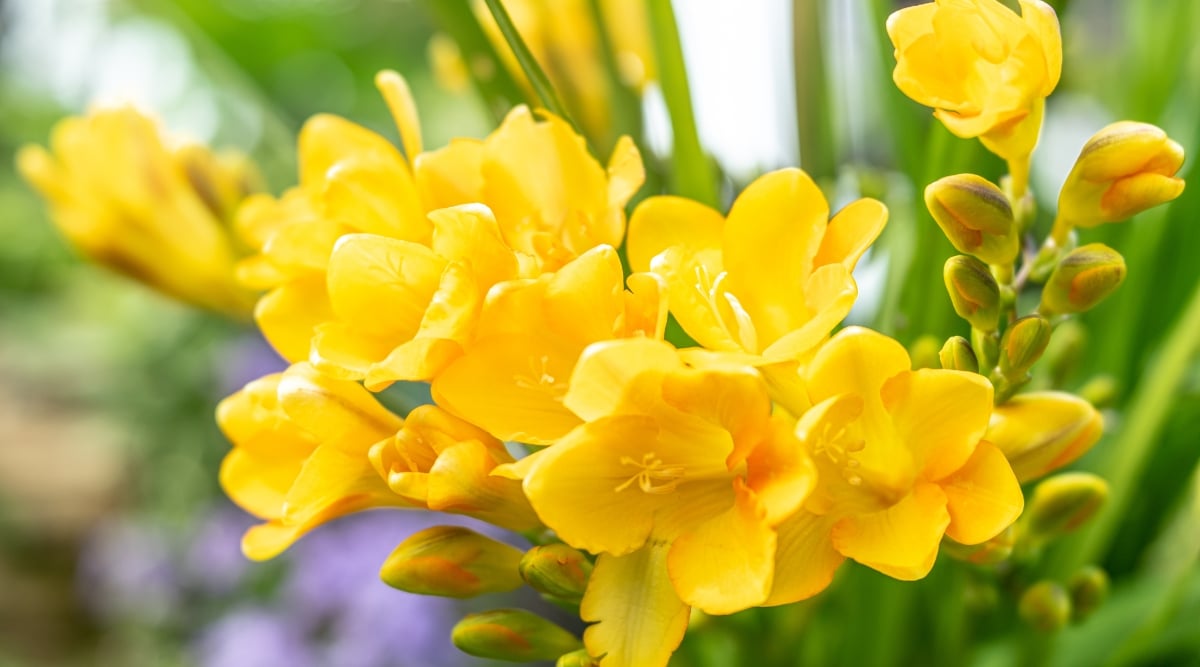
One of the most popular wedding flowers, freesias are known for their sweet and fruity scent and wide array of colors. These South African natives are surprising as they are bulbous plants, but they are only perennial in warm climates rather than needing a period of cold like most spring bulbs do.
Freesias attract pollinators to the garden, which is always a good thing in the cut flower garden because it means even more flowers! In warm climates, plant your freesias in the fall for early spring blooms.
In cooler climates, bulbs can be planted as soon as the threat of frost is past. Then they can be stored over the winter to plant again next year.
Peony
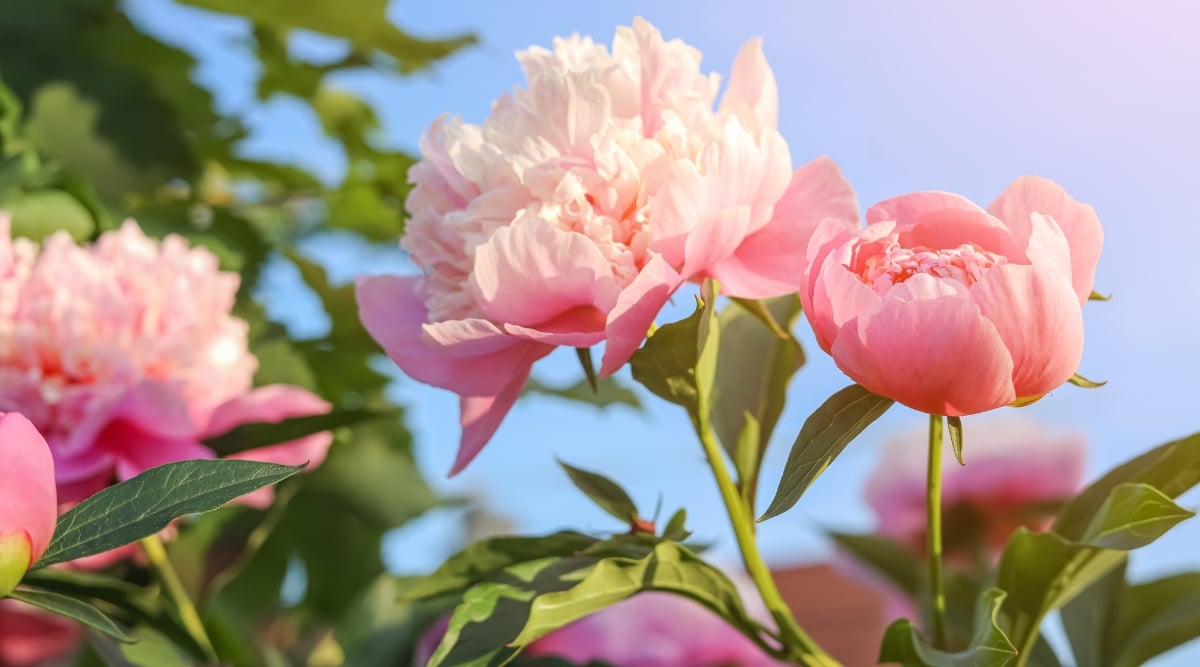
Peonies are some of the most visually spectacular flowers in the garden. Large and lush, yet somehow soft as a whisper, peonies have an enduring beauty that you will look forward to the return of every spring.
Peonies are very popular in floristry. They can be cut in tight buds and transported easily. Their woody stems are sturdy and do a good job of supporting their extra-large blooms.
Peonies vary in terms of scent, but most are at least somewhat fragrant, and others are quite aromatic. The scent is often described as fresh and sweet, mingles with a rosy quality. They can be fussy in the garden, preferring a consistent climate and care routine. It takes several years for them to bloom, but they are well worth the wait.
Lavender
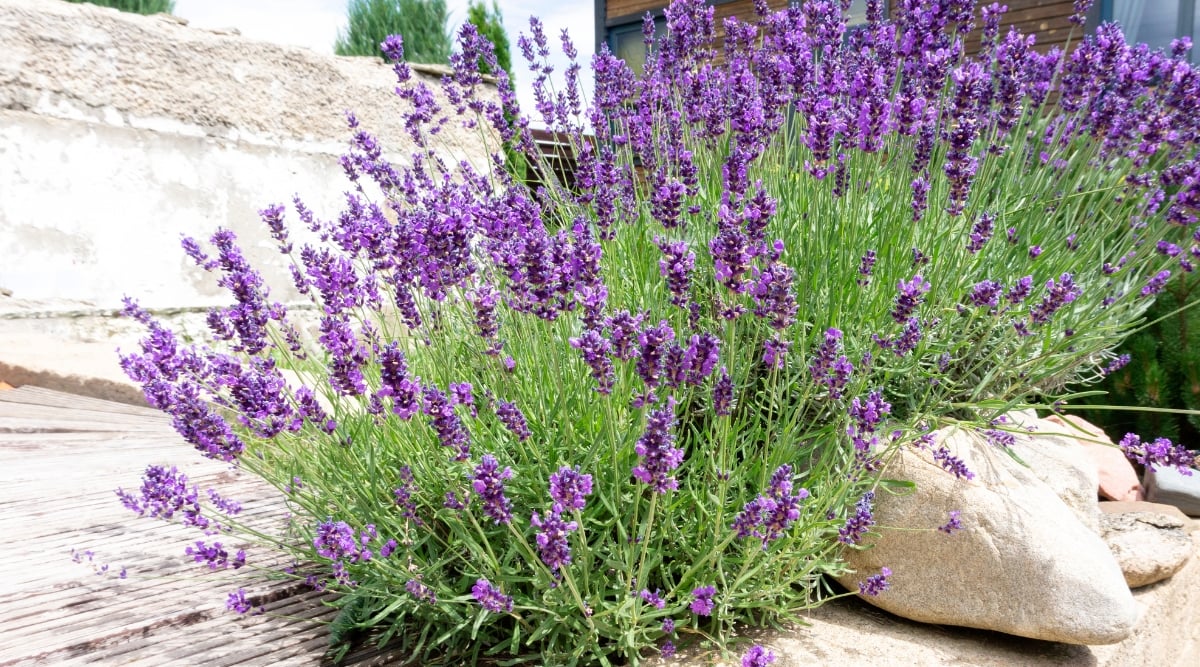
Lavender seems to be one of those plants that is either incredibly easy to grow or darn near impossible. Much of being successful with lavender is selecting a type that thrives in your climate and then depriving it of nutrients and exposing it to as much sun as possible. Lavender is a Mediterranean native, so it prefers poor and rocky soil and is very drought tolerant.
Something I did not know when I first attempted to grow lavender from seed is that the seeds need cold stratification. That makes a huge difference in germination rate. Once you have this plant established, it virtually takes care of itself, though. The strong, herbaceous fragrance of lavender flowers and foliage is a worldwide favorite for its soothing and relaxing effects.
Ginger Lily
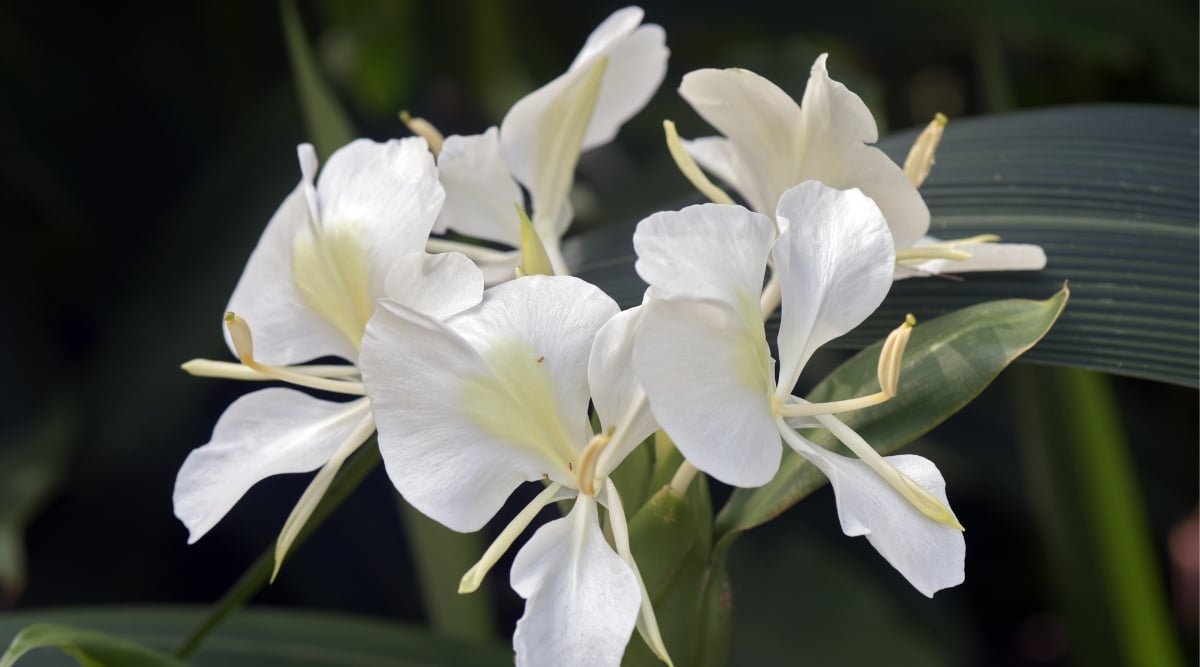
I recently added a ginger lily to my garden, and while I had heard that the flowers were delightful, I was not prepared for the addictive fragrance of the soft, ruffly, white flowers. The mix of floral and spicy was a perfect balance. I can only describe the scent as white floral with a zing of ginger, simply wonderful!
Plant your ginger lilies in a spot that receives no more than four hours of direct sun daily. This plant is a little sensitive to sun and wind as well, so offer it some physical protection.
Ginger lily needs consistently moist soil, but being waterlogged can distort or rot the roots, so mix in some compost to loosen up compacted soil when planting.
Heliotrope
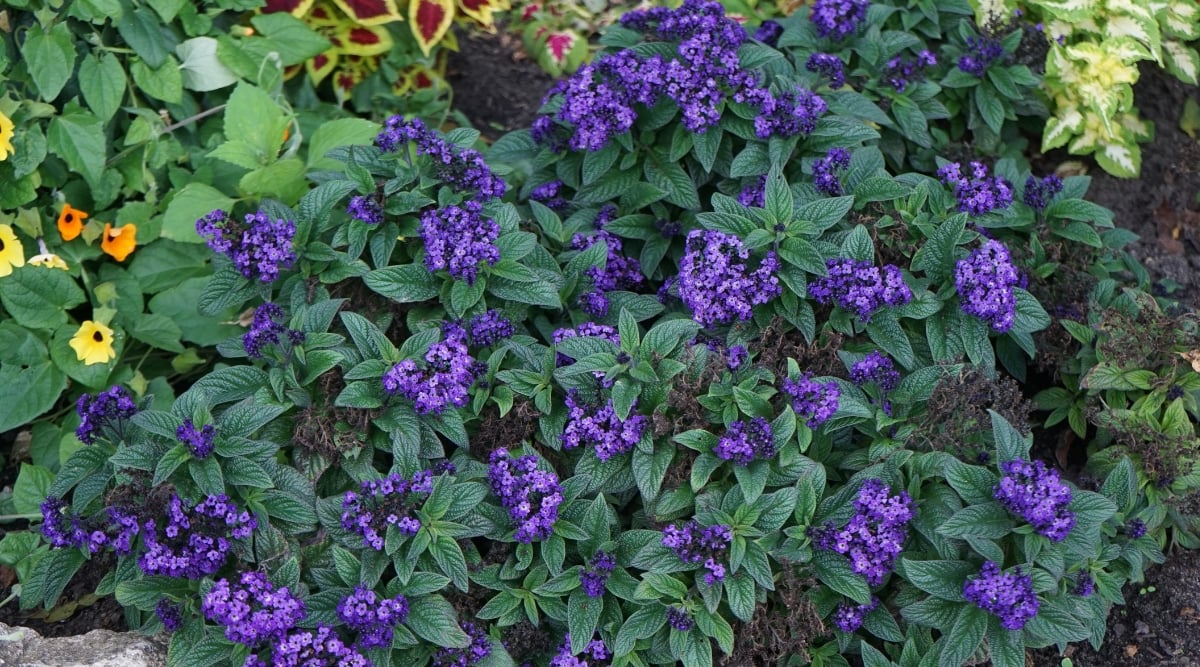
Heliotrope is a wonderful, low-maintenance addition to the garden. It is a prolific and long-bloomer that attracts plenty of pollinators. The bright purple, occasionally pink or white flowers are very fragrant, with a scent that can be described as powdery and sweet with a vanilla undertone.
Rich, well-drained soil is right for this plant. It is best grown as an annual because even in warm climates, it can become leggy in its second year. Plant it in early spring, in full sun, and keep the soil moist but not soggy. Fertilize monthly, and deadhead your heliotrope flowers.
Narcissus
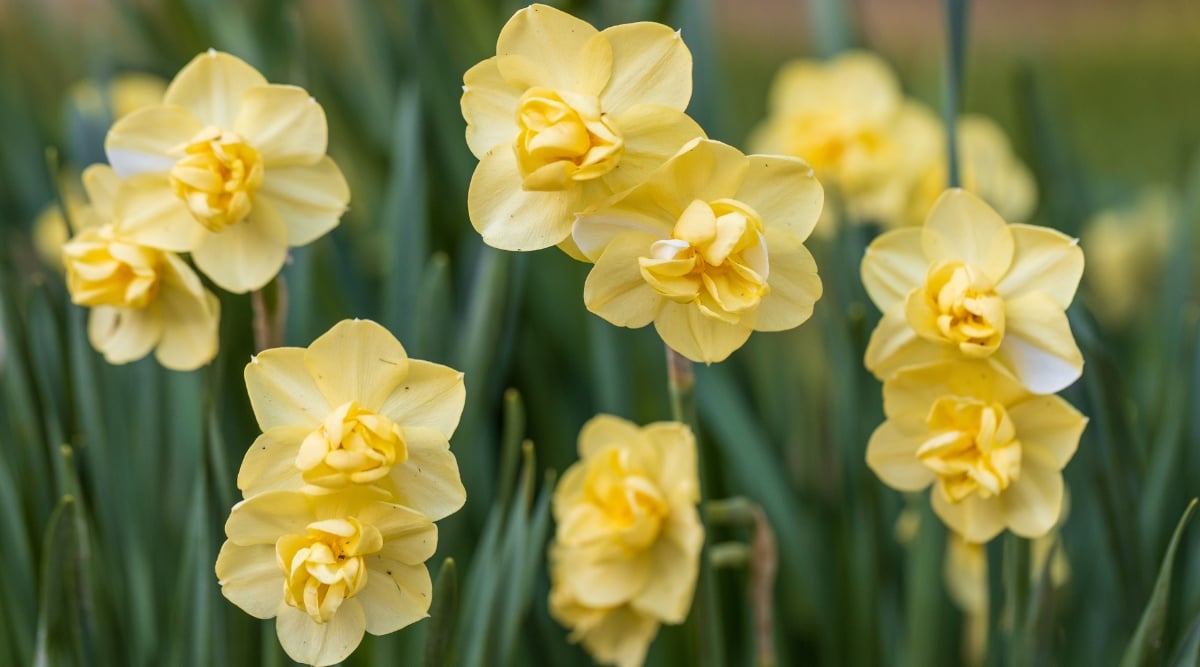
Also known as daffodils, narcissus flowers vary in shape, size, and color, but most noteworthy is their variation of fragrance. Larger daffodils tend to have a fresh, green, springy scent, while the smaller varieties, often referred to as paperwhite, have a heady, musky, white floral fragrance.
These bulbs can be forced indoors over the winter or planted in the ground in fall for spring blooms. When forced indoors, these bulbs do not need soil, just water and some gravel. Outdoors, rich, moist soil will make your narcissus happy. They will tolerate direct sun but prefer a spot with bright but indirect light.
Carnation
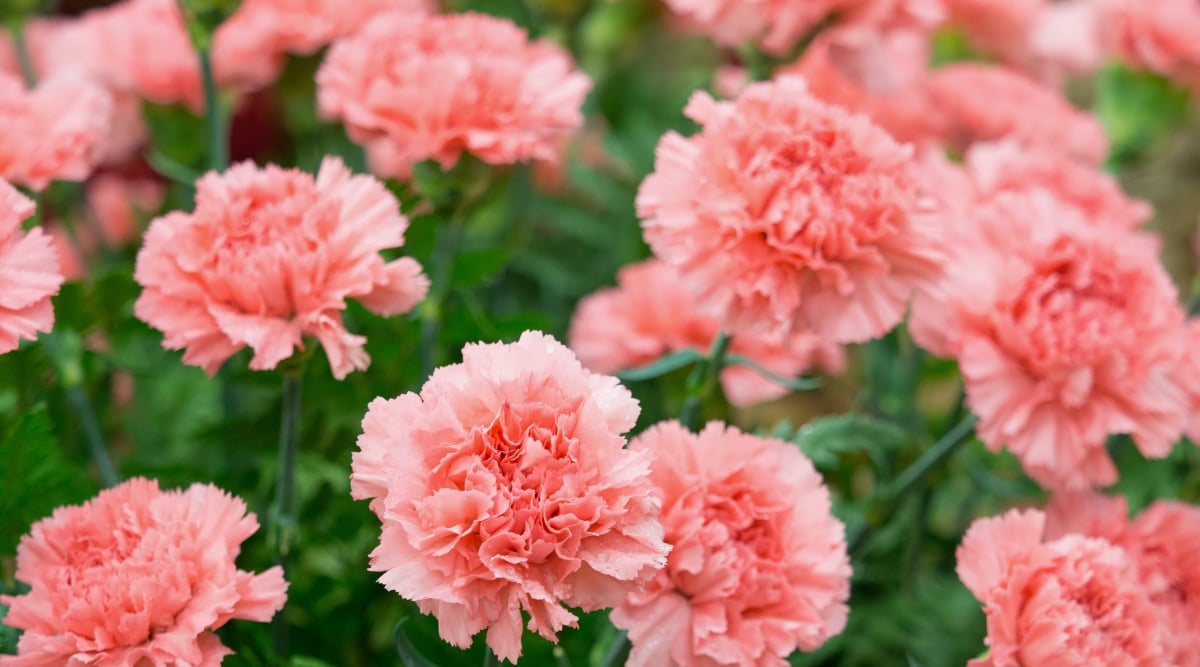
Some say that carnations are filler flowers, and certainly, they can be. But with their spicy, clove-like scent, I find a substantial bouquet of solid-colored carnations to be a charming and heartwarming sight.
Charlotte York may not be a fan, but if carnations are good enough for Carrie Bradshaw, I think they deserve a spot in the cut flower garden. Also, if you got that reference, it’s probably time to start using eye cream.
Carnations like the sun, but in warmer climates, give them some shelter from the intense afternoon light. Too much light will fade bright colors, but too little will leave you with stems that lack their signature stiffness and tend to grow leggy with lackluster blooms. Some types of dianthus are even evergreen in cold climates.
Boronia
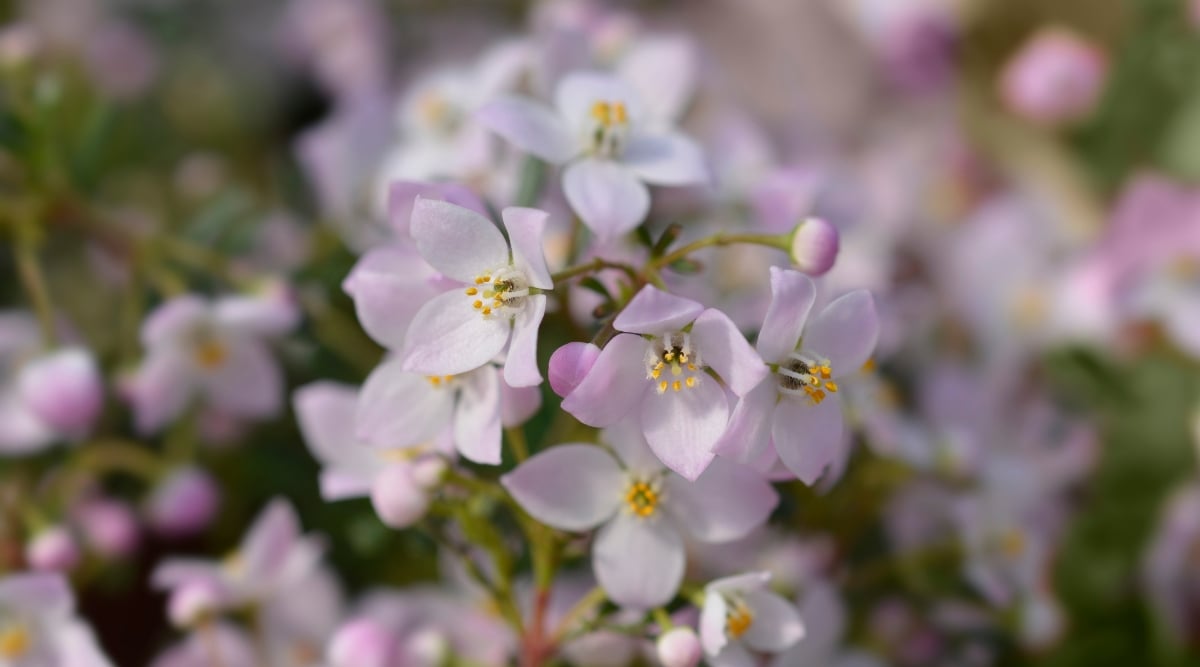
Boronias are members of the citrus family, which should give you an idea of what their flowers smell like. Fresh, green, and fruity are words commonly associated with these small, star-shaped flowers that bloom prolifically on medium-sized shrubs. Boronia shrubs make a great backdrop or border for the cutting garden, and pollinators love them.
Plant your boronia in partial shade or dappled sun with protection in the afternoon. Make sure to plant in well-draining soil, as boronia roots are sensitive to humidity and root rot. Pruning and proper care will make boronia a long-lived perennial in warmer climates.
Final Thoughts
It’s easy to see, or rather smell, why so many perfumers base their signature scents on floral aromas. Few smells can rival that of an impeccably curated bouquet of fragrant blooms. Try adding some of these sweet-smelling flowers to your garden this season, and I’m sure you will agree.


